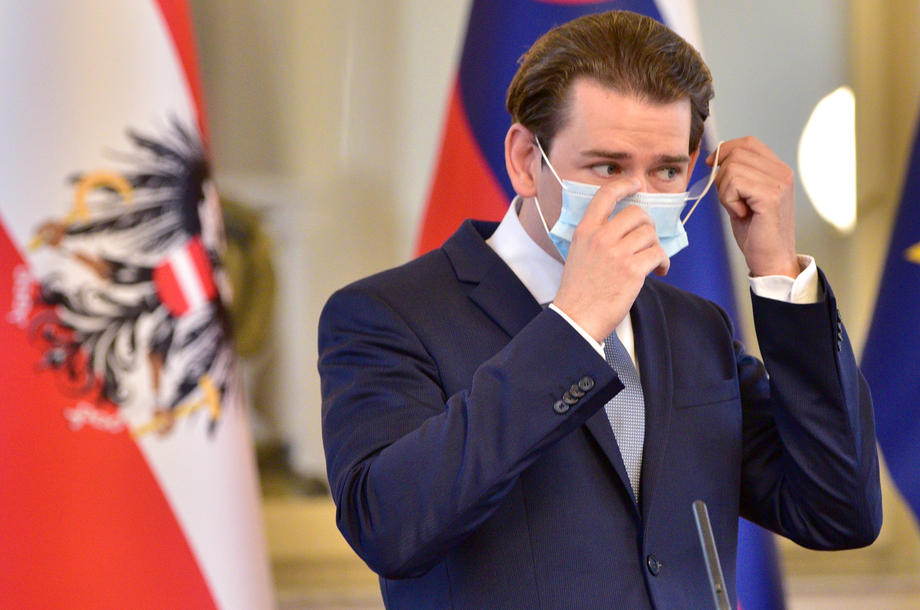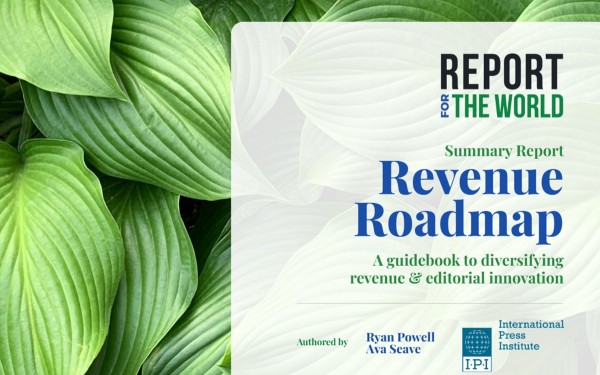Covid-19 changed the world. So it’s only logical that it also had implications on the Austrian media landscape. Many of the implications are not specific to Austria: From March on, a lot of journalists started to work from home.
Several newspapers decreased the number of pages, radio shows canceled episodes. Face-to-face interviews became impossible. Reporting on the coronavirus under the social distancing rules was hard. Reporting on other topics was even harder, since the virus was the main point of interest.
These restrictions hit all journalists, but not every restriction hit every journalist in the same way. While the economic impact was especially high on freelance journalists, the practical restrictions impacted different media outlets differently. Beginning in March, only a limited number of journalists were allowed to take part in the government’s press conferences.
Only journalists from the public broadcaster ORF and the Austrian Press Agency (APA) gained access. Other journalists were encouraged to send their questions to APA in advance. But Austria does not have a huge tradition of pool reporters. So – after the initial moment of shock – a lot of journalists from other media outlets took the restrictions as a limitation on their work.
This topic also touched on another debate: Whether the media, and especially the ORF, were too close to the government. At the height of the crisis, there was at least one daily government press conference. In the beginning, the ORF and other TV stations broadcasted them live and there were prime time interviews with Chancellor Sebastian Kurz.
While most observers acknowledged the important role of the public broadcaster as a source of information in times of crisis, other voices criticized the media for amplifying the government’s message without sufficient scrutiny. This criticism ceased in late spring when the number of press conferences declined.
In the meantime, media scrutiny has increased, and there has been outstanding reporting on the authorities‘ handling of Covid-19 as well, especially on the events in Ischgl, the ski town in Tirol where thousands of tourists from across Europe got infected and took the virus home with them.
Precarious financial position
Probably the most important impact on the Austrian media landscape has been a monetary one. Covid-19 amplified the economic pressure Austrian media outlets were already under. In spring, Alexander Mitteräcker, CEO of the daily Der Standard, told media that his newspaper was losing roughly 300,000 euros in ad revenue per week. These are devastating figures in an already difficult financial environment for the media.
Over the past months a lot of journalists have left their organization. At the same time, it didn’t become the big wave of departures some people expected. Moreover, no major media outlet closed down. There are two main reasons for this: First, there had already been layoffs in the past years, especially in the newspaper business.
And secondly, the government‘s corona aid measures also applied to media outlets. For example, many media companies sent their employees into “Kurzarbeit” (where the state covers a part of the salary). There was also a direct aid package for media outlets and big corona-related ad campaigns from the government.
The aid package was basically an extension of the existing media subsidies. These subsidies are determined by circulation, so big tabloid papers benefitted most, which was criticized by other media outlets. The initiatives helped media outlets to keep their head above water, but also brought up potential conflicts of interest. And they raise the question of what comes after the aid packages are discontinued.
Covid exacerbating exisitng issues
At the same time, Covid-19 didn’t just create new problems for Austrian media; it also made existing issues more visible. For example, the lack of an freedom of information act. Most protocols of the government’s corona crisis units are still not public, so it’s impossible for media and citizens to comprehend the political decisions that took and are still taking place.
The Austrian government laid out a stimulus plan of 50 billion euros, including tax deferrals, mainly for private businesses. A lot of the transactions were outsourced to a new company named COFAG in which the Republic of Austria is the only shareholder. And because COFAG is a company and not a government office, the payments are outside of parliamentary control and the parliamentary opposition’s right to request information, the latter being an important way for journalists to access information as well.
This is a popular trick, and one that is not confined to the federal government: The Vienna city government sent every household a coupon to be used in the city’s restaurants to help the struggling gastronomic branch. When journalists tried to ask the city about the amount of money spent on ads, the city only disclosed the spending for the whole action including the coupons. The campaign was also administered by a company owned by the city.
This type of outsourcing doesn’t completely remove the spending from oversight. These companies are audited by the federal or the state’s audit office. But their reports usually come late and don’t answer a lot of questions. So Covid-19 served to remind Austria once again of it’s lack of a substantial freedom of information act. The government has promised to fix this problem. In July, Minister for Constitutional Affairs Karoline Edtstadler announced that a freedom of information act would be proposed soon. But as of mid-October, there is still no proposal.
While there were no polls directly asking about trust in the Austrian media amid the Corona crisis, the Gallup Institute has conducted several surveys regarding “Corona and Media” in Austria in recent months, the latest in early October. They found declining interest in the coverage of the virus: one-third of the participants had not informed themselves about the coronavirus situation the day before. In April, 31 percent said the media helped to contain the crisis. In October only 17 percent supported that statement, while 21 percent said the media mainly caused panic.
These changes correlated with the decline in trust in the politicians handling the crisis. “If the perception of the media is only as a messenger, the skepticism towards the politicians is transferred to the media”, Andrea Fronaschütz, the head of Gallup Austria, said. “Quality of reporting in uncertain times is measured in credibility, transparency, respectability and guidance.”
- Click here to read more articles from IPI’s new reporting series Media Freedom in Europe in the Shadow of Covid.




